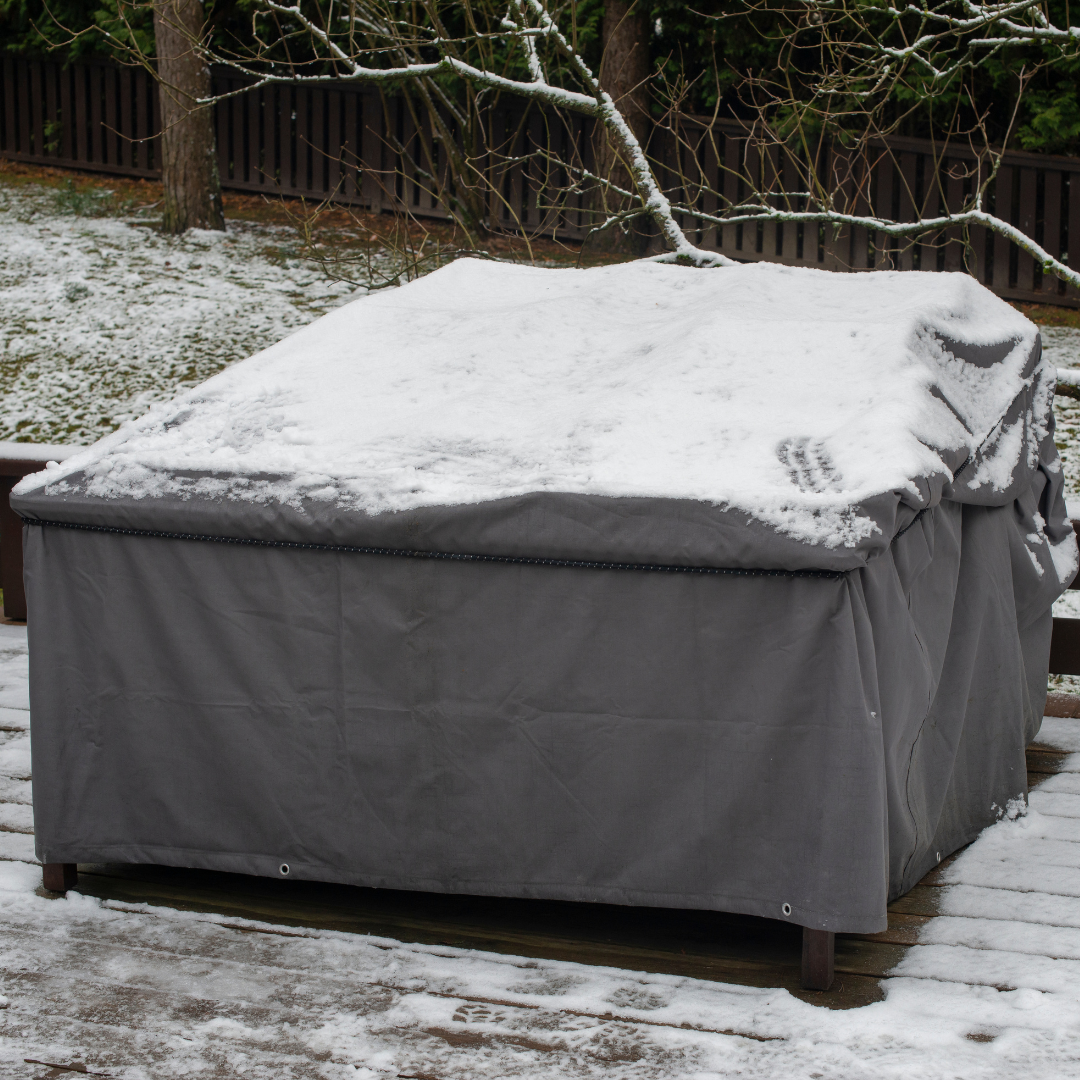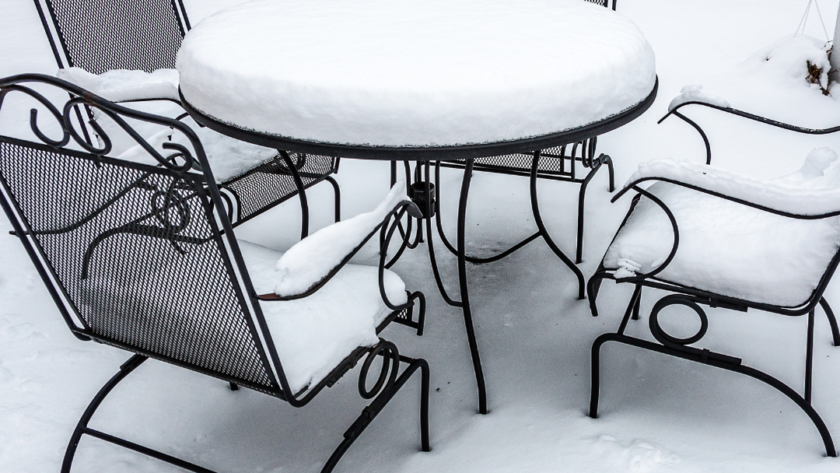With winter just around the corner, now might be a good time to start getting your outdoor furniture ready for hibernation. Some might be puzzled as to why outdoor furnishings need to be prepared and put away during the colder months of the year. After all, they are meant to stay outdoors, as it says on the tin.
While that might be true, you still need to take some precautions if you want to avoid potential damage and keep your furniture in proper condition for longer so you can enjoy it for multiple seasons. Although garden pieces are usually made of durable materials and water resistant fabric and are therefore capable to withstand exposure to the elements, freezing temperatures and harsh weather conditions can still take a toll on them and reduce their life span considerably.
So, a little bit of maintenance and care can go a long way in keeping your outdoor furniture in top shape, and that’s why winterizing is always a good idea. Besides, since you won’t be using any of your garden furnishings during the winter, there’s no reason to leave them out in the cold. If we’ve got you convinced of the importance of prepping your outdoor furniture for the colder season, we’ve also got you covered with tips and advice on the steps you need to take in this respect.
Give it a good clean
The first thing you need to do before you store away your furniture is to give it a good clean. Even if you’ve only used it sparsely throughout the year and it hasn’t been subjected to much wear and tear, the mere fact that it was out in the open for several months was enough for it to accumulate dirt and debris. So, if you want to have spotless furniture next spring you need to check this maintenance task at the end of each season.
The way you’re going to clean your garden furniture depends on the materials it’s made of. As a rule of thumb, you should avoid using abrasive cleansers. Dampening a sponge or a soft cloth in a mix of mild soap and warm water and then scrubbing gently is a good cleaning technique for most outdoor furnishings.
If you’re cleaning wood or teak furniture, try not to get it too wet since moisture combined with cold temperatures can cause the wood to crack. For stubborn stains, you can use a mix of vinegar and warm water, scrub with a soft brush and then rinse.
Plastic and aluminum furniture is the easiest to clean since you can simply scrub them with a mild detergent and then rinse them with a hose. The same cannot be said about natural wicker furniture which is a bit more susceptible to damage, so you should wash it as gently and sparingly as possible.
As for wrought iron furniture, although it’s sturdy, it can rust over time if it doesn’t have a protective coating or if the coating chips away. So, remember to buff away the rust with a brush before you go in with soap and water to clean it.
Also, make sure you give your furniture enough time to dry up as storing it when it’s still damp can cause it to become moldy, rotten or rusty, depending on the materials. That’s why you need to dry it with a towel or leave it in the sun for a couple of hours until all moisture is gone.
Fix and prep
After you’ve removed all the dirt and grime from your furniture pieces, you should inspect them for damages and have them fixed. You might need to patch up holes, tighten screws, glue or replace certain pieces. If your DIY skills are not that great, you might want to call in a professional to do the job.
Then, once you’ve made sure your furniture is as good as new, you can give it the final maintenance treatment. For wood and teak furniture, that means applying a coat of furniture oil and protective sealants to protect it from water and moisture. Metal furniture could use a fresh coat of paint or some car wax to help repel water and dirt. You can also treat metal surfaces with a rust neutralizer for extra care.
Cover it up

If you plan to leave your furniture outside, the least you can do is to use furniture cover to ensure that the rain, snow, wind and low temperatures don’t wreak havoc on them. But even if you intend to bring your furnishings inside, covering them up is still a good idea. Covers will help you keep dirt and debris away, so your furniture will be clean and ready to go when it’s time to bring it back out.
Furniture covers are widely available these days and come in all shapes and sizes, so you can have your pick. However, when purchasing covers, it’s recommended to opt for breathable materials as they allow for moisture evaporation and thus prevent mold and mildew growth.
Choose a storage space
The best way to protect your garden furniture during winter months is to find a space where you can store it safely. Plastic furniture is especially sensitive to low temperatures, so bringing it inside is always recommended.
Your home’s garage can offer the perfect place to store outdoor furniture. With a bit of tidying up, you can prepare a corner to keep your chairs, tables and other furniture safe and sound. If you don’t have a garage or there’s not enough room inside, a shed or a garden shack can be used as storage space.
Wrapping up
Maintenance is key when it comes to extending the life of your outdoor furniture. If you take good care of it when it’s not in use and remember to winterize it at the end of each season, you’ll be able to enjoy it for many more years to come. So, make sure to give these tips a try before winter settles in this year.



